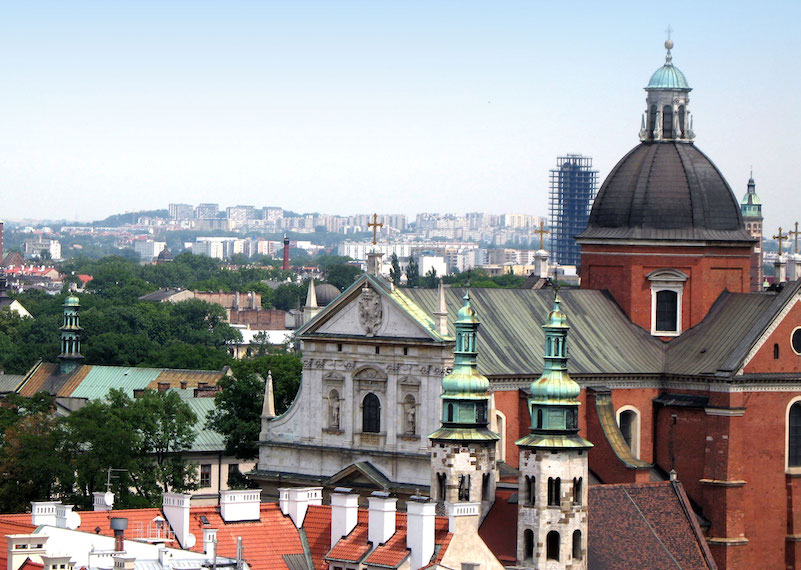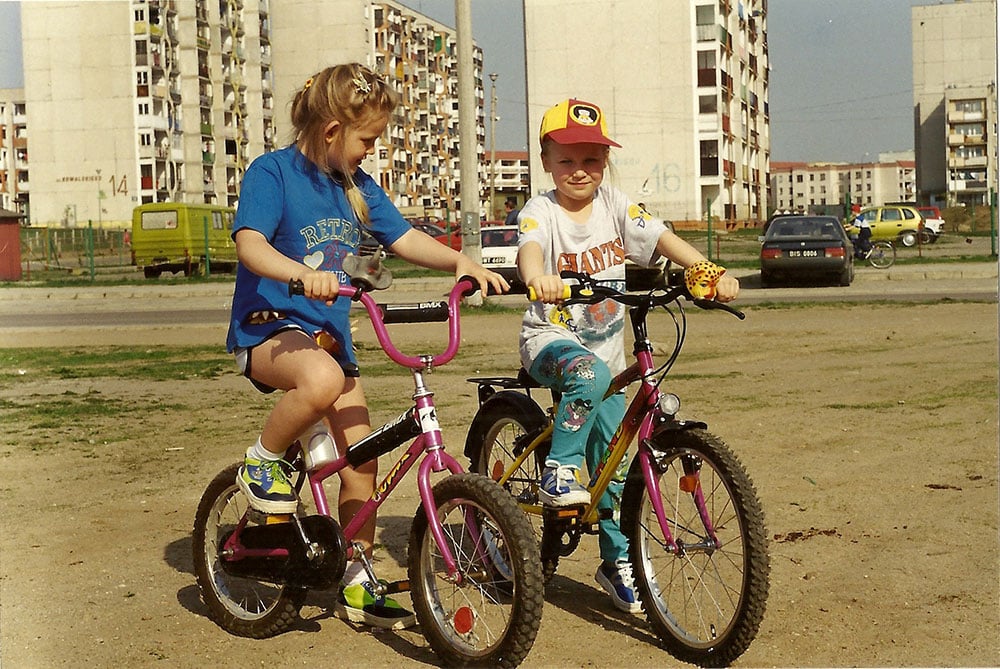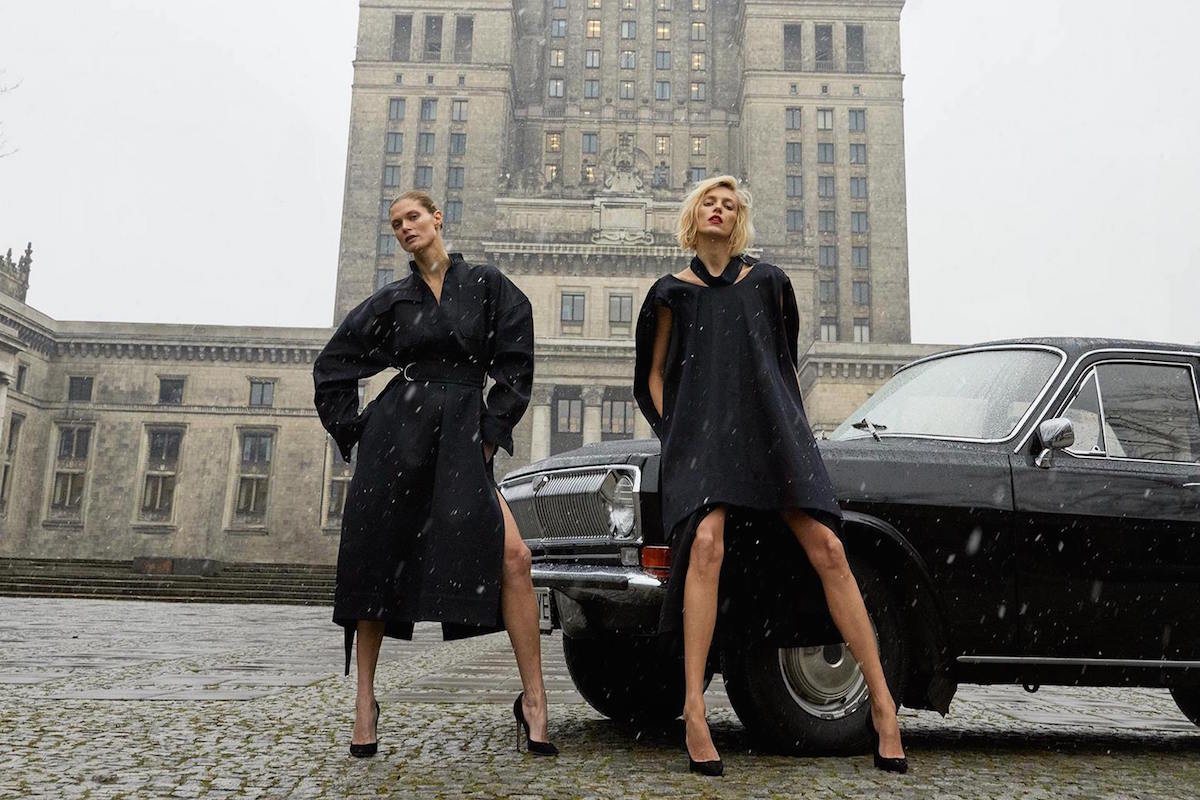5 minute guide to Kraków: Poland’s second city has a medieval heart and a future-forward culture

The best building in the city is probably Saints Peter and Paul Church. Kraków has a sky-high density of beautiful churches, basilicas, and monasteries, but even as you’re walking home at four in the morning, your eyes glued to the map, this one draws your gaze upwards. The church is at its most stunning at night, when its baroque details and statues are highlighted by the interplay of shadow and light. At the very front of the church, you’ll see a row of 12 raised sculptures: these are copies of the damaged originals, but are still luring in their grandiosity. If you head inside, you’ll find that the church’s crypt serves as the National Pantheon for distinguished Poles in the arts, science, and culture, while elsewhere you’ll find concerts of classical music and weekly demonstrations of Foucault Pendulum: a device that proves the Earth’s rotation.
The best way to get around is on foot. Kraków is a relatively small and extremely green city, with all the main sightseeing spots in close proximity to each other. At the very centre, there’s Rynok Glowny, the city’s chief tourist attraction, enclosed within a labyrinth of sprawling medieval streets. If you wander a little further out, you can also walk the 4km loop around the lush Planty Krakowskie Park — or, if you get tired, there’s always the option to rent an electric scooter. These are dotted in abundance across Kraków’s streets, since there are quite a few services operating in the city. All you need to do is download the app of your choice and register. Prices start at one Polish złoty (£0.20) for the initial rental fee, and around 0.50 złoty (£0.10) for each minute after.
If you get a souvenir, let it be something from the flea market. Kraków’s flea markets should really be treated as museums where all the artefacts are on sale. You can pick up a variety of items, from Russian watches and German war helmets, to 20th-century postcards and curious pottery and art. The biggest market is Plac Targowy Unitarg, where you can also find fresh produce for sale, with the Rynok Novy in Kazimierz, which operates all week long, roughly 10 minutes down the road. As is the case with most flea markets, the best time to visit is on a Sunday morning, although you’ll find some stalls on a Saturday too.
The best month to visit is October. Not only does the city look gorgeous in its full sunset array of autumnal colours, but it’s also when the Unsound Festival of contemporary music and art hits Kraków’s culture scene. Apart from a paid-for programme (which you should still totally check out), there’s plenty of free and low-cost events for every budget. They include meditative live music sessions in the mornings, talks, film screenings, and art exhibitions during the day, and parties packed with Europe’s most forward-thinking line-ups to take you deep into the night.
If you want to get away from the tourists, head to the Podgórze district. Located to the north of the busy Kazimierz district, the neighbourhood is quiet and has an embankment for leisurely walks, as well as lively restaurants, bars, and cafes with plenty of outside seating. Cross the Vistula River, and you’ll be able to see the statues of trapeze artists balancing on Father Bernatek’s Bridge. Also worth checking out is St Joseph’s Church, a magnificent piece of gothic architecture built in the early 1900s, and Bednarskiego Park, a tiny forest with benches and a playground. Walk a little further, and you’ll find Krakus Mound, which opens up with a fine view over the city.


